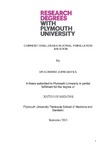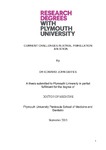CURRENT CHALLENGES IN ATRIAL FIBRILLATION ABLATION
| dc.contributor.supervisor | Roobottom, Carl | |
| dc.contributor.author | Davies, Edward John | |
| dc.contributor.other | Peninsula School of Medicine | en_US |
| dc.date.accessioned | 2016-12-05T15:23:57Z | |
| dc.date.issued | 2016 | |
| dc.identifier | 10440154 | en_US |
| dc.identifier.uri | http://hdl.handle.net/10026.1/8067 | |
| dc.description | Full version unavailable due to 3rd party copyright restrictions. | |
| dc.description.abstract |
The ablative management of atrial fibrillation, despite a number of landmark discoveries, remains one of the most challenging fields in interventional electrophysiology. It is generally accepted that successful isolation of the pulmonary veins is a highly effective way of managing paroxysmal forms of AF. However, despite almost a decade of research into alternative lesion patterns, the solution to persistent AF remains beyond our grasp. A variety of strategies have been proposed to target key areas in the atria; these use various complex mapping systems, usually based on tailored lesion sets to try and improve outcomes. None have proven to be the golden bullet. We have investigated the role of a lesion set intended to alter the electrical properties of the posterior wall of the left atrium. Commonly known as the ‘box-set’, this pattern has shown promise in early studies and may provide some key insights into future developments. Surgical ablation using the Epicor system aims to deliver the box-set lesion, outcomes have previously been documented but each series has its limitations. In our series, very late outcomes are reported to show an 80% freedom from AF rate in patients with paroxysmal AF pre-operatively and only 20% in those with long-standing persistent forms. The reason behind this dramatic variation is explored through the invasive electrophysiologal assessment of both successful and unsuccessful cases. We report a clear correlation between the successful isolation of the posterior wall and long-term freedom from AF. Though surgical ablation may be an acceptable approach for some, the ultimate goal is a lesion set that can be delivered purely endocardially. We explore the outcome of one such empirical pattern based on the box-set concept delivered through linear catheter technology and report outcomes broadly similar to alternative patterns. | en_US |
| dc.language.iso | en | en_US |
| dc.publisher | Plymouth University | en_US |
| dc.subject | Atrial Fibrillation | en_US |
| dc.subject | Ablation | en_US |
| dc.subject | Cardiology | en_US |
| dc.subject.classification | PhD | en_US |
| dc.title | CURRENT CHALLENGES IN ATRIAL FIBRILLATION ABLATION | en_US |
| dc.type | Thesis | |
| plymouth.version | non-publishable | en_US |
| dc.identifier.doi | http://dx.doi.org/10.24382/3788 | |
| dc.identifier.doi | http://dx.doi.org/10.24382/3788 | |
| rioxxterms.funder | Not available | en_US |
| rioxxterms.identifier.project | Not available | en_US |
Files in this item
This item appears in the following Collection(s)
-
01 Research Theses Main Collection
Research Theses Main



